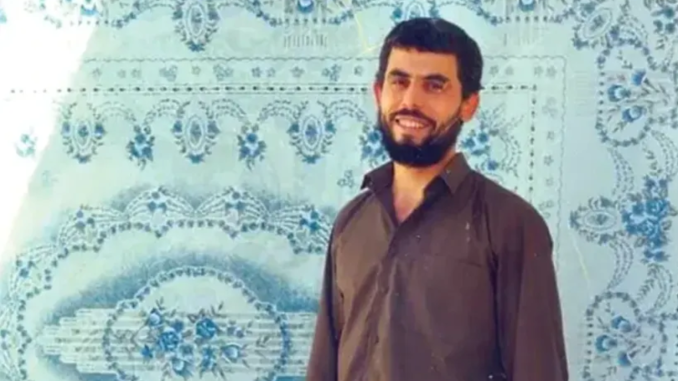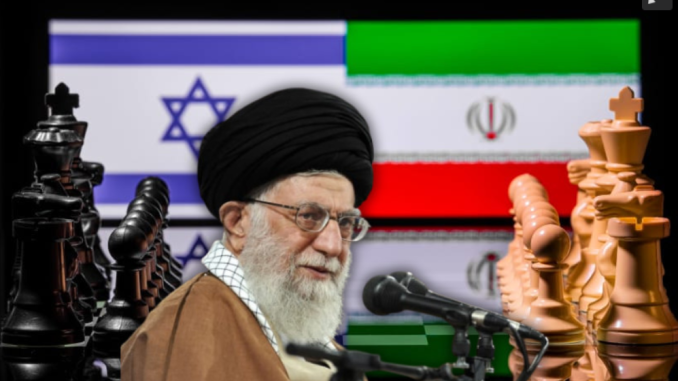The elimination of Hamas leader Yahya Sinwar marks a significant setback for Iran’s regional strategy, potentially weakening the “axis of resistance” that has long threatened Israel’s security.
By SETH J. FRANTZMAN | OCTOBER 17, 2024
 Yahya Sinwar during his prison sentence. (photo credit: VIA MAARIV/SECTION 27A COPYRIGHT ACT)
Yahya Sinwar during his prison sentence. (photo credit: VIA MAARIV/SECTION 27A COPYRIGHT ACT)
The death of Hamas leader Yahya Sinwar is a serious blow to Iran and its “axis of resistance” in the region. The Islamic Republic has backed Hamas for many years. When Sinwar took charge, it was a major game-changer for Iran. Under Sinwar’s leadership and guidance over the past decade, Hamas has become a major terrorist group that carried out the worst massacre of Jews since the Holocaust.
Iran invested heavily in Sinwar’s Hamas. It helped it with long-range rocket technology and also encouraged it to develop drones and other new technology. The Gaza-based terrorist group also studied Israel carefully and likely had some Iranian guidance in this respect.
Hamas became a massive danger by 2023, much worse than it was back in the Second Intifada (2000-2005). This was a combination of Iranian backing and Sinwar’s dedication. With backing from Turkey, Qatar and Russia, Hamas felt that October 7 could change the region.
Iran worked with Hamas to knit it into its multi-front war on Israel. It wanted to have Hamas coordinate with Hezbollah and the Houthis. Iran would bring the Iraqi militias back to help against the Jewish state. This was a multi-front war that Tehran wanted to launch to sap Israel of its technological capabilities.
Sinwar pushed for this war to happen sooner. He innovated with the Great March of Return and other antics on the Gaza border. With Iranian backing, he launched the 2021 ten-day war. He and Iran learned a lot from this. What followed were meetings in Lebanon and talks about how to accelerate coordination.
 Iran’s supreme leader Ayatollah Ali Khamenei on a conceptual image of war between Israel and Iran using chess pieces and national flags. (Illsutrative) (credit: AFP PHOTO / HO / KHAMENEI.IR, Canva, INGIMAGE)
Iran’s supreme leader Ayatollah Ali Khamenei on a conceptual image of war between Israel and Iran using chess pieces and national flags. (Illsutrative) (credit: AFP PHOTO / HO / KHAMENEI.IR, Canva, INGIMAGE)
Iran got Hezbollah to attack Israel on October 8, a day after the Hamas attack, and brought in the Houthis to attack as well. This was Iran’s game plan. Sinwar was a significant jewel in its crown in terms of Iran’s assets in the region and its “axis,” which includes the Houthis, Hezbollah, and the militias in Iraq.
Regional dynamics
It’s important to look at the regional blow that Iran has suffered now. It has lost Sinwar and Nasrallah. These were major figures in two powerful groups that have been harming Israel. For most of the year, Iran felt it was winning. It had helped massacre 1,000 Israelis. It had depopulated the northern border. It carried out direct attacks with drones and long-range ballistic missiles in April and early October. The militias in Iraq have also targeted Israel with drones. The Houthis have been wreaking havoc in the Red Sea – they even targeted Tel Aviv with a drone.
However, for Iran, it was Hamas that was the pawn closest to Israel. Palestinian Islamic Jihad is a smaller proxy group. Hamas is a powerful group and a key to Iran’s plans. Hezbollah is a Shi’ite group in Lebanon. It was Hamas that Iran hoped could advance the plans to defeat Israel and destroy the two-state solution.
Now that Sinwar is dead, Iran will have to rethink the equation. Qatar had been backing Hamas and paying money to Sinwar’s Hamas. Via Qatar, Tehran hoped that they could influence the US to pressure Israel into a ceasefire. Doha had tried to get a ceasefire to preserve Hamas in Gaza and preserve Sinwar.
But Israel turned the tables by eliminating Hamas leaders. Ismail Haniyeh was killed and so was Salah al-Arouri. Marwan Issa and Mohammed Dief were killed.
Now Hamas has very few leaders. Most of them reside in Doha. Now is the time that the US can use pressure on Qatar to stop hosting Hamas. Iran is now on the back foot. It could lose in Lebanon; it could face humiliation at home. The death of Sinwar could cause other dominoes to fall in the Iranian multi-front war on Israel.
Israel must play its cards right now. It has a chance now to reverse a year of difficulty. It has a chance to remake this regional chess board. Removing the Sinwar pawn on Iran’s chessboard is important. Now is the time to take a shot at Iran’s proverbial “queen” in this game and strike at the regime itself.



Turkey, Iran and Russia (and the US)
Ezekiel 38/39 speaks of an alliance involving Iran, Sudan, Libya and TURKEY.
Mike Doran just published an article in the Wall Street Joural about the death of Sinwar, and notes that HAMAS will now probably split into two factions, a pro-Iranian faction and a PRO-TURKISH faction — a situation now existing in Kurdistan as well.
https://rumble.com/v5jbmj0-special-edition-sinwar-is-dead.-whats-next.html?e9s=src_v1_ucp
I think a major Israel-Iran war will ultimately be LED by the Turks, seeing that the Iranians are becoming severely weakened.
Many prophecy watchers think Russia will be the leader of the anti-Israel coalition. From what I can see, the Russians, greatly weakened by their fiasco in the Ukraine, will play only a minor, supportive role.
Also according to the prophecy, NATO (= “the merchants of Tarshish”) will probably sit on the sidelines, exerting pressure from a distance to restrain the Russians. It looks like Donald Trump will be our president.